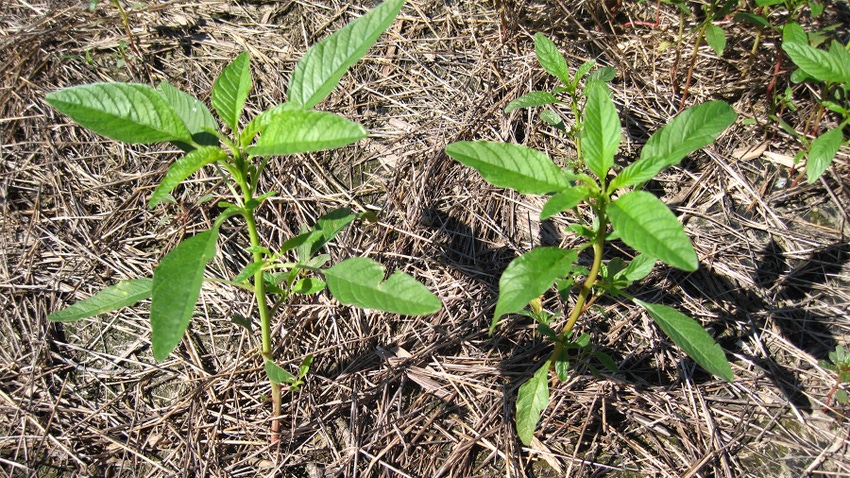April 26, 2024

The weeds you see popping up this spring and summer may look different than what was out there just last year. While weed pressures typically stay constant for a few years at a time, there have been some gradual shifts, and there are a handful of changes to look for this growing season.
Bryan Young, professor of weed science at Purdue, says one thing that will not change this year is waterhemp’s growing presence. “Waterhemp continues to be the thorn,” he adds.
However, increased efforts to control waterhemp have indirectly helped cut back on giant ragweed populations. Although it remains an issue, you should see less giant ragweed in fields this year.
“We’ve been attacking waterhemp in soybeans by using 2,4-D or dicamba, and those herbicides are even more effective on giant ragweed than they are with waterhemp,” Young says. On the other hand, he says there are not as many options for soil residual herbicides for giant ragweed as there are for waterhemp.
Marestail populations also could be lower this year. Young says both Enlist soybeans and Xtend soybeans have contributed to better marestail management, in addition to controlling giant ragweed.
Grasses will be an issue
Grass weeds seem to be on the rise and are expected to be a problem this year. Young says a focus on killing broadleaf weeds has limited the control put forth on grasses.
“Sometimes, we’ve been limited in how we can apply our glyphosate in an effective manner to kill grasses because we’ve been so focused on broadleaf control using dicamba,” Young says. “But we know that Roundup is going to work better for control of grass species if we get a chance to put some traditional ammonium sulfate in there with it.”
Young sees producers make the mistake of trying to control grass weeds with Liberty. That herbicide is nonsystemic, so it requires good contact with the growing point in the whorl to kill grass weeds. Using postemergence grass herbicides, like Select, paired with glufosinate can mitigate grass weed pressure.
“If you’re using that combination, we can see some improvements in control of annual grasses because we’ll have two herbicides working on them,” Young adds.
Broadleaf weed shifts
Two broadleaf species Young sees appearing in larger numbers this growing season are common cocklebur and burcucumber. Driving factors for common cocklebur’s increased presence in corn could include poor canopy closure and wet conditions. Young says this weed can come in with late rains.
Young also says burcucumber has been brought up in farmer conversations more often than normal lately. He says late-season drone herbicide applications can help control this weed, and that additional tool might be why so many people are talking about it.
A focus on small-seeded broadleaves, like pigweed and waterhemp, has allowed some large-seeded broadleaf species to slip through the cracks. Some that Young sees popping up this year are velvetleaf and morningglory. Many preemergence herbicides are better at controlling small-seeded broadleaves than large-seeded broadleaf weed species.
“The advice there would be, when selecting your herbicides, make sure you address your driver weeds,” Young says. “But you have to also consider some of the other weeds that have historically been a problem on the farm, and make sure that you don’t forget about those.”
About the Author(s)
You May Also Like






